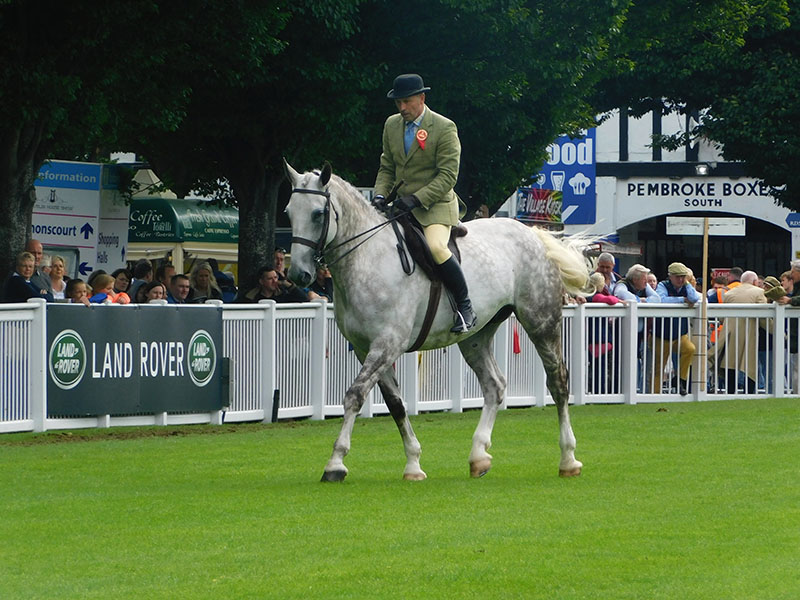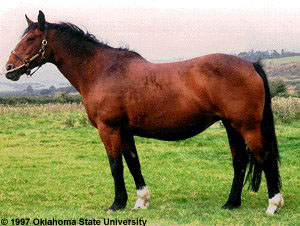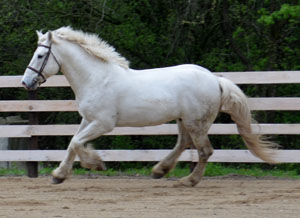Irish Draught Horses
The name Irish Draught may be misleading in that many people are surprised to find that the breed is a lighter free-moving animal than the traditional image of the heavy draught horse. Nevertheless, the ancestry of the breed goes back to the small Irish farm where the farm horse doubled up as a hunter, as well as, taking the trap or dogcart into the town. However, today the Irish Draught is more sought after for its breeding qualities. In England, the brood mare has been acknowledged as an excellent dam of a hunter when mated with a Thoroughbred stallion. Now the Irish Draught stallion is being used more and more to get extra bone and substance in the progeny of the lighter type mare.
The breed has been in existence for a century or more, though it has been nearly lost on several occasions. During periods of poverty and famine in Irish history, many breeders gave up registering their animals. It took many hours of work by breed enthusiasts and the Irish Horse Board to get a new stud book started. They found that hundreds of Irish Draughts were going to the slaughter houses each week and that there were very few left.
Traditionally, the Draught was the farm horse in Ireland and it also had to be capable of being used as hunter and ridden. It pulled the cart, tilled the fields, and it had to be capable of keeping up a good jog in the trap. The horse had to be docile, strong and economical to keep. Its traditional winter feed was young gorse put through a chaff-cutter, boiled turnips and bran or meal of some sort that could be spared from the cows. Gradually the breed developed into an animal around 15.2 h.h. - 16.2 h.h. in mares and 16 h.h. - 17 h.h. in stallions and of any whole color.
The horse has a graceful carriage of head and neck with a big eyes, strong limbs with particularly short cannon bones. Despite the power the horse should be free moving and not ponderous. The feet should be like those of a hunter and not a cart horse. The feet are one of the most important points and the reason why the Irish Draught is required for the breeding of show jumpers, they have to withstand the concussion from jumping, often on hard surfaces.
All horses in Ireland can have an Irish Horse Register number: on passing inspection Irish Draughts have an additional R.I.D. number on their passports. Imported animals registered with the G.B. Society and those bred in the United States are given a sequence of letters and numbers. The first letter is the grade, the next three/four numbers are the breeder's membership number followed by 'M' or 'F' for the sex and then four numbers. They have a stamp and signature on the back page when they have been inspected and passed.
References
Irish Draught Horse Society of North America
The Livestock Conservancy PO Box 477, 33 Hillsboro St, Pittsboro, NC 27312



